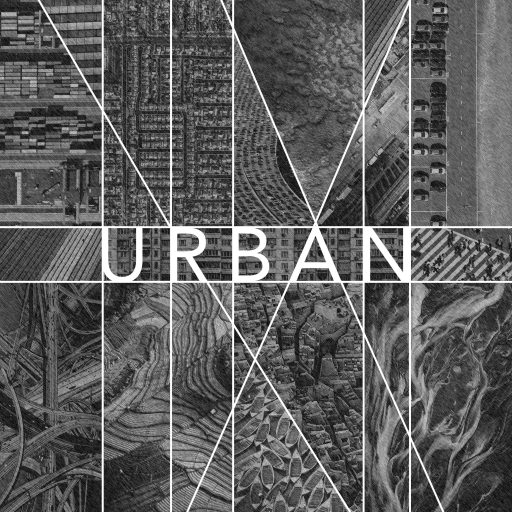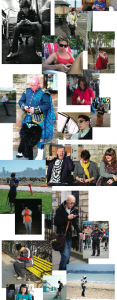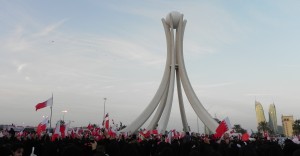 New York City is full of isolated locations of deviance and crisis, what French philosopher Michel Foucault called heterotopias: fixed spaces that reveal cultural contradictions, where people are often excluded from ‘normal society’ and yet still tolerated. It is this idea of tolerance that I contemplated as I crossed the bridge from northern Queens to Rikers Island on my first day of a six-week workshop inside the city’s main prison complex, where I taught the Bill of Rights to the facility’s incarcerated juveniles, aged sixteen to eighteen.
New York City is full of isolated locations of deviance and crisis, what French philosopher Michel Foucault called heterotopias: fixed spaces that reveal cultural contradictions, where people are often excluded from ‘normal society’ and yet still tolerated. It is this idea of tolerance that I contemplated as I crossed the bridge from northern Queens to Rikers Island on my first day of a six-week workshop inside the city’s main prison complex, where I taught the Bill of Rights to the facility’s incarcerated juveniles, aged sixteen to eighteen.
Roosevelt Island once had quarantine facilities for smallpox, insane asylums and prisons. Riverside Hospital on North Brother Island just west of Rikers Island treated those with leprosy, venereal disease and drug addiction. Both facilities were abandoned in the 1950s and 60s — probably no coincidence as the philosophy on medical treatment shifted from isolation towards rehabilitation. But Rikers Island remains in use.
There is only one way to access the island — across the Rikers Island Bridge. The island facility is comprised of ten jails with a total capacity of 17,000 all-male inmates. It technically is as part of the Bronx, but is part of Queens Community Board 1 and has a Queens zip code. Hazen Street, which begins in Queens at the Grand Central Parkway, continues onto Rikers Island and bisects the space. The MTA runs the Q100 bus over the bridge, but private cars require a permit.
These connections mean that, unlike the restricted North Brother Island, Rikers Island is far more ambiguous in terms of its accessibility, especially if you are just looking at a city map. In fact, over the years, the MTA has both included and omitted Rikers Island from its maps as if undecided as to how public or private the place truly is. In practice, the island is open to people who are visiting prisoners, employees of the Department of Corrections, or inmates — not exactly the average New Yorker.
Every trip to Rikers Island comes wrought with bureaucratic hurdles. Through Fordham Law School, we are officially sanctioned to run the legal workshop, but the prison system in New York City is so massive that our entry process each week does not become more efficient over time. Rikers is its own subsystem within the Correction Department — a veritable city in its own right. Invariably, each week an officer would ask where we would be going and we’d get the answer, “The RNDC (Robert N. Davoren Center)? Oh, that’s far.”
When we arrived at the RNDC, we’d get our IDs checked for the third time, sometimes verified against a list of names they had, sometimes not. After handwriting our names into a logbook along with the number on a plastic badge given to us earlier, our belongings would be passed through an X-ray and metal detector. Then we would be ushered into the next room, where after showing our IDswe again we would exchange our plastic badges for a yellow laminated badge. We’d then be led to another security station where we’d have to show the yellow badges.
At this point, the architecture abruptly changes. Before this, you might have convinced yourself you were inside a school — the light blue paint, the photos on the wall, the American flag, the offices. But now, a long hallway stretches seemingly indefinitely before us punctuated with retractable prison bar walls, sanitary beige paint, and defunct x-ray machines. Natural light floods the corridor, but the view outside is of barbed wire.
About halfway down is an incredible mural, but we’d walk by it so quickly every time that I could only absorb the expressionist style
of the brushstroke and the contrast it makes with the linearity of the hallway. But I remember there being women in the mural, one thing that this prison clearly lacks (except for the female correction officers).
After the mural, the architecture shifts again as we’d descend a staircase into a freezing extension of plywood walls. This opens onto a narrow concrete walkway with impossibly high fences and barbed wire, conjuring up scenes from The Shawshank Redemption and Le Prophet intent on giving a clear message about the futility of escape.
Across a large asphalt recreational area is the building where the juveniles stay. We called it the ‘greenhouse,’ an apt name because it consists of two cavernous but well-lit rooms — think of inflatable indoor tennis structures filled with beds neatly lined in rows — that distinguish these inmates from their cell-confined adult counterparts. Even though they may be tried as adults, it’s nice to know the system differentiates the youth at least in terms of treatment. Still, there have been reports (and an ongoing lawsuit) that this configuration may not be necessarily safer than the traditional.
When we arrived, half of the kids were usually still asleep and it was our job to round them out of bed. We held the workshops in a semi-circular community space at each end of the sleeping halls. The acoustics of the “greenhouse” made it almost impossible to hear one another, so you’d sit close together. This facilitated discussion but there was usually a group that refused to participate and created noise in the background.
The range of personalities is pretty close to what you would find in any classroom: the outgoing ones who get into the discussion, the reserved ones who prefer to observe, the withdrawn ones that sit at the outskirts, and the troublemakers in the back of the room. Some seemed to eagerly anticipate the class, asking what we will go over that day as they peruse the law textbook borrowed from the prison library. But sometimes the noise becomes overwhelming and reserved kids begin to withdraw.
We taught them the Bill of Rights, culminating in a mock trial on the last day. During the mock trial, we were all impressed with the material they retained, their excitement level, and their desire to perform well for their peers.
After building a bit of a rapport with some of the kids, they started to tell us not only their experiences within the correction system but their hopes for the future. For me, the most rewarding moments came from a few specific kids who I will call Chris and Michael. I met them on my first day. They were both active in the discussion and we talked about our neighborhoods and immigrant family backgrounds.
Chris told me he anticipated being released soon, but on the last day he was still there. He seemed less involved this time and I was concerned until he told me that his case had been dismissed and he was going home the next day. I wondered if Chris was worried about his future outside of Rikers but we didn’t get a chance to really chat about it.
On the last day, Michael chastised me for not showing up the previous week (there was a slashing, so the prison was on lockdown) before asking me if I would visit him between Christmas and New Years. Michael’s court hearing has been postponed several times and is now scheduled for this May. By then the seventeen year-old will have been in Rikers Island for over eight months.
As a planner, I wondered about the difference between prisons as heterotopic islands of “deviance” versus the many in New York City that are right within our midst. What impact does location have on the inmate and on the public’s understanding of the correctional system?
On Rikers, an island within a city of islands, the jail is both visible and invisible to the surrounding city. We tolerate Rikers Island likely because few of us even know it exists. But if we hope to reintigrate the incarcerated residents of the jail with the rest of ‘normal’ society, a good first step might be to address the role of place and space in our city’s prison system and in our own consciousness.
By Michelle Young





